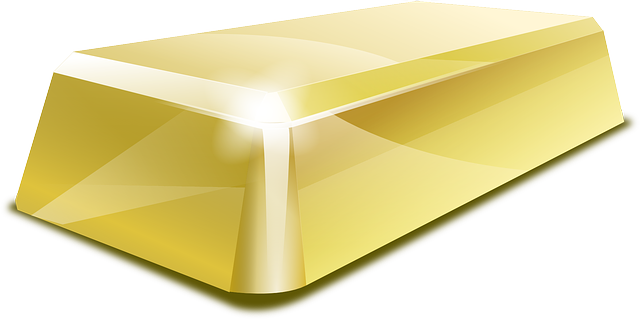401(k) plan holders considering investing in gold and silver through an IRA should verify the eligibility of their plan for rollovers into precious metals IRAs, as not all 401(k)s permit this. If eligible, they can proceed with an in-service withdrawal or a direct rollover post-employment, ensuring strict adherence to IRS regulations to maintain the tax-advantaged status of their savings. The process involves selecting a knowledgeable custodian for the precious metals IRA, one who complies with IRS storage and acquisition rules and can manage investments like American Gold Eagles and Canadian Silver Maple Leafs, which are suitable for retirement accounts. This conversion can offer a hedge against inflation and economic instability, with the added benefits of diversifying investment portfolios and potentially safeguarding against currency devaluation. It's crucial to engage with both your 401(k) plan administrator and the IRA custodian throughout this transition to ensure compliance and protect your investment.
Exploring the transformation of your 401(k) into a tangible investment in gold and silver offers a strategic approach to wealth preservation. This article guides you through the nuanced process, from verifying rollover eligibility with your plan to navigating the legal landscape. We delve into selecting a reputable IRA custodian for precious metals and exploring diverse gold and silver options. With step-by-step guidance on executing the transfer and managing your new investment, embark on this journey to diversify your retirement portfolio with physical assets.
- Evaluating Rollover Eligibility for 401(k) to Precious Metals
- Understanding the Legalities of Rollover to Physical Gold and Silver
- Choosing a Trusted IRA Custodian Specializing in Precious Metals
- Selecting Your Precious Metals Investment: Gold and Silver Options
- Completing the Transfer Process and Managing Your New Physical Gold and Silver I
Evaluating Rollover Eligibility for 401(k) to Precious Metals

401(k) plans often include provisions for rolling over assets into other qualified retirement accounts, such as an Individual Retirement Account (IRA) that holds gold and silver. Before initiating a rollover to physical precious metals, it is imperative to thoroughly review your plan’s documentation or consult with its administrator to confirm eligibility. This step is crucial as not all 401(k) plans permit such rollovers; some may only allow transfers to other 401(k) plans or traditional IRAs. Once you ascertain that your plan supports this option, you can proceed with the rollover process by either requesting an in-service withdrawal if still employed there, or by executing a direct rollover from your former employer’s plan after job separation. It is essential to adhere to IRS regulations to avoid penalties and taxes, ensuring that the funds are transferred correctly to maintain the tax-advantaged status of your retirement savings. Additionally, when selecting a custodian for your precious metals IRA, choose one with experience in handling such assets, as they will be responsible for managing the acquisition and storage of your gold and silver holdings in accordance with IRS guidelines.
Understanding the Legalities of Rollover to Physical Gold and Silver

401(k) plans offer a tax-advantaged way for individuals to save for retirement, typically through diversified investment options such as stocks and bonds. However, for those with a preference for physical gold and silver, converting these assets within your 401(k) can be a strategic financial move. Before embarking on this transition, it’s crucial to understand the legal framework governing rollovers into precious metals.
The Internal Revenue Service (IRS) provides guidelines that allow for the transfer of funds from a 401(k) plan to another qualifying retirement account without incurring immediate tax liabilities. This includes rolling over funds into an Individual Retirement Account (IRA) that specializes in holding physical gold, silver, and other approved precious metals. The legal process mandates that the rollover must be completed in a direct transfer from the 401(k) custodian to the trustee of the IRA holding the precious metals, to maintain the tax-deferred status of the funds. It’s essential to work with both your 401(k) plan administrator and the IRA custodian specializing in precious metals to ensure compliance with all rules and regulations, including purity standards for the metals and reporting requirements. Understanding these legalities is paramount to navigating this complex process successfully and avoiding unnecessary penalties or taxes.
Choosing a Trusted IRA Custodian Specializing in Precious Metals

When considering the conversion of your 401(k) to physical gold and silver, selecting a trusted IRA custodian that specializes in precious metals is paramount. This custodian will manage your account and ensure compliance with Internal Revenue Service (IRS) rules and regulations, which are specific to self-directed IRAs holding alternative assets like precious metals. The chosen custodian must be reputable, experienced, and equipped to handle the unique requirements of these investments. They should provide clear guidance throughout the process, from initial setup to ongoing management of your holdings. Additionally, they must maintain proper storage and insurance for the metals, which may be held in an approved depository or a home storage program if allowed by the custodian and IRS rules. It’s crucial to perform due diligence and select a custodian with a proven track record of handling such transactions, as this will safeguard your investment and facilitate a smooth conversion process from your 401(k) to physical gold and silver within your IRA.
Selecting Your Precious Metals Investment: Gold and Silver Options

When considering the conversion of your 401(k) to physical gold and silver, it’s crucial to explore the various precious metals investment options available. Gold and silver have long been recognized for their intrinsic value and historical role as a hedge against inflation and economic uncertainty. Among the most popular choices for investors are American Gold Eagles and Canadian Silver Maple Leafs. These bullion coins are widely recognized and carry government guarantees on weight and purity, making them suitable for retirement accounts.
Investors should also consider other forms of gold and silver investments such as bars, ingots, or rare coins, which can offer a premium over common bullion coins due to their collectible status. It’s important to research reputable dealers who specialize in IRA-approved precious metals. These dealers will provide the necessary documentation for IRS compliance and ensure that your investment aligns with the rules governing such transfers. Once you’ve selected a dealer, they can assist with the process of rolling over your 401(k) funds into a self-directed IRA that allows for investments in physical precious metals. This step enables you to purchase and take delivery of your chosen gold and silver products, diversifying your retirement portfolio and potentially providing an additional layer of financial security.
Completing the Transfer Process and Managing Your New Physical Gold and Silver I

Once you’ve established your 401(k) plan permits rollovers, the next step is to initiate the transfer process. This involves contacting your 401(k) plan administrator and requesting a direct rollover to a self-directed IRA custodian that specializes in alternative assets like gold and silver. It’s crucial to choose a reputable custodian with experience in handling physical precious metals, as they will facilitate the transaction and securely store your investments. The IRS mandates that the funds be transferred directly from the plan to the IRA to avoid tax implications—this is known as a “trustee-to-trustee transfer.” Upon completion of the rollover, you’ll receive possession of your gold and silver. Managing these physical assets requires considerations such as secure storage, insurance, and regular appraisals to monitor their condition and value. Ensuring the safety of your investments is paramount, as is staying informed about market trends and maintaining accurate records for tax purposes. Properly managing your new physical gold and silver not only preserves their intrinsic value but also potentially offers a hedge against inflation and currency devaluation.
In conclusion, transitioning a 401(k) into physical gold and silver is a strategic move that can diversify your retirement portfolio. By carefully evaluating rollover eligibility, understanding the legal framework, selecting a reputable IRA custodian, and thoughtfully choosing your precious metals investment, you can secure a tangible asset within your retirement plan. The process of transferring your 401(k) to physical gold and silver requires due diligence and adherence to IRS regulations, but the potential benefits of adding these time-tested commodities to your holdings can be substantial. Ensure that each step is executed with precision to successfully integrate these assets into your retirement strategy.
